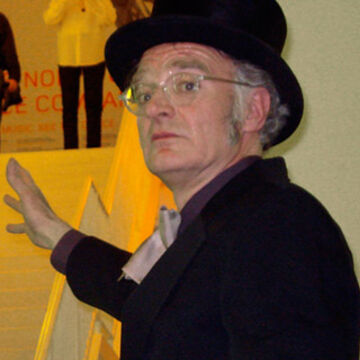| Surveying the Shadows |
Art History, Theory, and Criticism |
2014 (001) |
Fall 2024 |
|
Description
Since the Exposition des arts incoherents in 1882, the orthodox story of art has been pre-figured, parodied, or echoed by ideas and activities which are less well-known but nevertheless informative about the state of the arts through modernism to today. Including Hydropaths, `pataphysicians and members of groups called Lettrisme or Neoism, propagating ideas ranging from transmental to pandrogenic, this course identifies and contextualizes some of the salient adventures of those who ignore convention to create and play before the vanguard and behind the canon.
|
Class Number
2258
Credits
3
|
| Art of the 1980s |
Art History, Theory, and Criticism |
3310 (001) |
Spring 2024 |
|
Description
In assessing currents and concepts in contemporary art, this course examines the various elements in all media that have come to define postmodernism. The course places special emphasis on women artists during the 1980s, the European contribution to contemporary art, and the exploration of recent art in Chicago.
|
Class Number
2104
Credits
3
|
| Artists' Books & Related Phenomena |
Art History, Theory, and Criticism |
3524 (001) |
Summer 2024 |
|
Description
Since the early 1960s, artists have increasingly experimented with alternative methods of disseminating their ideas, using books or records, occasionally collaborating in periodicals, and other uncategorized projects. Students investigate the increasing acceptability of such activities and discuss a broad variety of publishing, from guerrilla fly-posting through mail-art magazines to the exhibition-in-a-book, including the unconventional artists' bookwork. Examining both well-known examples and obscure occurrences, the course attempts to place alternative art publishing in a contemporary context.
|
Class Number
1276
Credits
3
|
| Seminar:Manifestations- Public or Private |
Art History, Theory, and Criticism |
3805 (001) |
Fall 2024 |
|
Description
What is the value of a manifesto? This course examines the difference between published proclamations by artists and the work they produce. Using contemporary and current criticism, the course will scrutinize, compare, and contrast a limited number of texts, objects, and activities within and since the Modern era. Students will not only learn more of the perceived-or misperceived-aims of given artists or movements, they will also learn more about the continuing conversation between theory and practice.
|
Class Number
2266
Credits
3
|
| Anti-Art |
Art History, Theory, and Criticism |
4520 (001) |
Spring 2024 |
|
Description
This course considers attacks on art. After brief introductions to ancient & modern iconoclasm, censorship, and cultural suppression the focus is on the more recent phenomena of anti-art as Art. After dada, the idea reoccurred?notably in the 1960s?and sporadically since. Various art-inspired assaults on different aspects of culture are examined; the Situationist International, Fluxus, No!Art, GAAG; strikes by artists in Europe, America, or on international Mail-art circuits; and other less overt attacks on traditional art modes, such as those witnessed in punk and post-punk collaborations. 'Anti-art' also involves new methods of creating, displaying, distributing, considering, critiquing, researching and writing about art: all these avenues will be open to investigation.
|
Class Number
2108
Credits
3
|
| Situation Report |
Art History, Theory, and Criticism |
5371 (001) |
Spring 2024 |
|
Description
Even before the First Conference of International Situationists in 1957, there were stylistic differences and ideological contradictions among the participants. Since then, texts and exhibitions claiming connection to the Situationist International have proliferated. This seminar traces the evolution of those original tendencies that made even a temporary situationist allegiance possible, and follow the trajectories of individual careers. Students explore the images, facts, theories and legends, and compare the heretical ideas and actions of the earliest members of this brief association, to assess the subsequent and current status of the Situationist International.
|
Class Number
2109
Credits
3
|
| Fluxus |
Art History, Theory, and Criticism |
5612 (001) |
Fall 2024 |
|
Description
This course aims to give a thorough grounding in a phenomenon, which has been called 'the most radical and experimental art movement of the sixties.' In this seminar, students investigate the politics, theory, aesthetics, and practice of Fluxists, whose activities deliberately confused the borders between painting, poetry, music, sculpture, and life. Their work raises problems which echo dada and agitprop, while prefiguring punk and, arguably, postmodernism.
|
Class Number
2270
Credits
3
|

